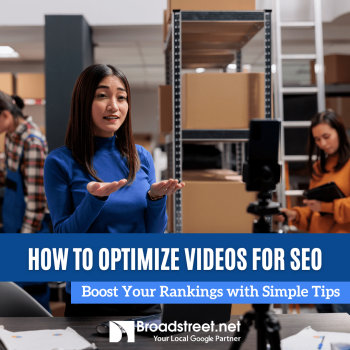How to Optimize Videos for SEO: Boost Your Rankings with Simple Tips
Video content is becoming more and more important for both engagement and SEO. In fact, video SEO is on the rise! With platforms like YouTube being the second largest search engine in the world, optimizing your video content is crucial if you want to rank higher in search results. But how exactly do you go about it? Let’s dive into some key strategies for optimizing your videos for SEO.
Start with an Optimized Title
Just like any webpage, the title of your video is one of the most important factors for SEO. Be sure to include relevant keywords that your target audience is searching for. A strong video title should be descriptive, concise, and incorporate keywords naturally. This helps search engines understand what your video is about and makes it more likely to show up in relevant searches.
Tip: Keep your titles under 60 characters to ensure they display properly on search engine results pages.
Add a Detailed Video Description
Search engines can't watch videos, but they can read descriptions. That's why providing a detailed, keyword-rich video description is essential. Aim for at least 200-300 words describing the video’s content, what viewers can expect, and any important takeaways. The first 100 characters are particularly important because that’s what shows up in search results, so include your most important keywords there.
Tip: Include links to your website or other videos to increase engagement and encourage viewers to explore more of your content.
Use Relevant Tags
Tags help YouTube (and other video platforms) understand the context of your video. By adding relevant tags, you can help your video appear in related video suggestions, as well as search results for similar content. Use a combination of broad and specific tags, including keywords your target audience might use when searching for content like yours.
Tip: Don't overload with tags—focus on relevance and quality over quantity.
Include a Transcript
Adding a transcript to your video not only makes your content more accessible, but it also helps with SEO. Google can’t “watch” videos, but it can crawl text. By including a transcript or captions, you're providing search engines with more content to index, which can boost your rankings. This is especially helpful if your video covers a topic with a lot of valuable keywords.
Tip: You can use YouTube's automatic captions or upload your own, but make sure they’re accurate for the best results.
Focus on Video Quality and User Engagement
Google and YouTube value engagement metrics like watch time, likes, shares, and comments. The longer people stay and interact with your video, the more likely it is to be recommended to others. Therefore, it’s important to create content that not only educates or entertains but also encourages people to engage with it.
Tip: Create compelling thumbnails, ask questions in your videos to encourage comments, and add calls-to-action (CTAs) to keep viewers engaged.
Optimize for Mobile
More than half of video content is consumed on mobile devices, so it’s important to ensure your videos are mobile-friendly. Make sure your videos load quickly and display properly on all screen sizes. Additionally, mobile users often search for videos on the go, so make sure your titles and descriptions are clear and easy to read.
Tip: Test your videos on multiple devices to ensure they’re delivering a great user experience across the board.
Promote Your Videos Through Other Channels
External traffic signals, like sharing your videos on social media or embedding them on your website, can also boost your video SEO. More views, especially from high-quality sources, show search engines that your content is relevant and valuable.
Tip: Share your videos on all your social media channels, include them in email newsletters, and embed them in related blog posts or articles.
Use Playlists to Increase View Time
Playlists are a powerful tool for video SEO. When your videos are grouped into playlists, they automatically start playing one after another, which can significantly increase total watch time. The more watch time your videos accumulate, the higher the chance they’ll rank well in search results.
Tip: Organize your videos into relevant playlists that encourage viewers to keep watching.
Conclusion:
Optimizing your video content for SEO can make a significant difference in how well your videos perform in search engine results. From optimized titles and descriptions to using transcripts and relevant tags, these strategies can help you increase visibility, engagement, and ultimately, rankings.
Need help optimizing your video content? Let’s chat! Whether you’re just starting with video SEO or looking to refine your strategy, we can help you get the results you're after.
#SEO #VideoMarketing #VideoSEO #DigitalMarketing #YouTubeTips #SearchEngineOptimization

